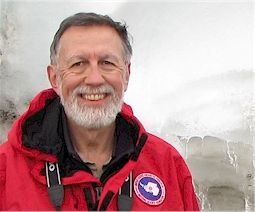非常抱歉,
你要访问的页面不存在,
非常抱歉,
你要访问的页面不存在,
非常抱歉,
你要访问的页面不存在,
验证码:

职称:Department of Chemistry
所属学校:Tufts University
所属院系:Geology/Earth Science, General
所属专业:Geology/Earth Science, General
联系方式:617-627-3124
Education Postdoctoral Fellow, 1987-88, Harvard University, Cambridge, MA (James Young) Postdoctoral Research Associate, 1985-86, S.U.N.Y. at Buffalo, NY (Janet Osteryoung) Ph.D. (D.Sc.), 1985, Université de Genève, Geneva, Switzerland (Jacques Buffle) B.A., 1975, M.S., 1978, California State University at San Diego/SDSU, CA (Alberto Zirino)
In-situ Planetary and Extreme Biogeochemical Analysis The Kounaves group research is aimed at unraveling fundamental questions in planetary science using modern in-situ or on-site analytical systems designed to study the biogeochemistry of extreme environments, where no one has gone before. As Phoenix mission Co-I and Lead Scientist for the Wet Chemistry Lab (WCL), Kounaves and his group performed the first wet chemical analysis of the martian soil. The experiments revealed an alkaline soil containing a variety of soluble minerals, but most surprising was the discovery of almost 1% perchlorate (ClO4-). Its discovery has wide ranging implications and has altered the way we view the chemistry of Mars and its potential to support life. The presence of perchlorate as Ca(ClO4)2 suggests that Mars' surface (at least around the Phoenix landing site) may have been severely arid for at least the past ~600 million years. The ClO4- may also be responsible for brines & gullies due to its depression of the H2O freezing point to -78ºC, the control of planet-wide soil and atmospheric water content, and the dificulty of instruments to detect organics (VL/GCMS; Phx/TEGA; & MSL/SAM). It could also act as an electron doner/energy source for any indigenous subsurface microbes, and is both good & bad for human explorers (can provide energy, fuel, and oxygen, but is human health hazard). The group's recent discovery, that ClO4- may form on any Cl-bearing mineral surface that is exposed to UV and that the process generates intermediary oxychlorines and highly oxidizing radicals, has implications not only for the production of ClO4- and the alteration/destruction of organics on Mars, but also on Earth and perhaps throughout the solar system and beyond. The discovery of perchlorate on Mars led the group to investigate the same possibility in the Antarctic Dry Valleys. The study provided the first unambiguous discovery and clear evidence of the ubiquitous natural formation of perchlorate on Earth, with accumulation in arid environments and global atmospheric production. The discovery also suggests that the perchlorate reducing bacteria and arachea may be a remnant of a significant pre-oxygen Earth perchlorate ecosystem. The group has also recently confirmed ClO4-, ClO3-, and NO3-, in the Mars meteorites EETA79001 and Tissent.